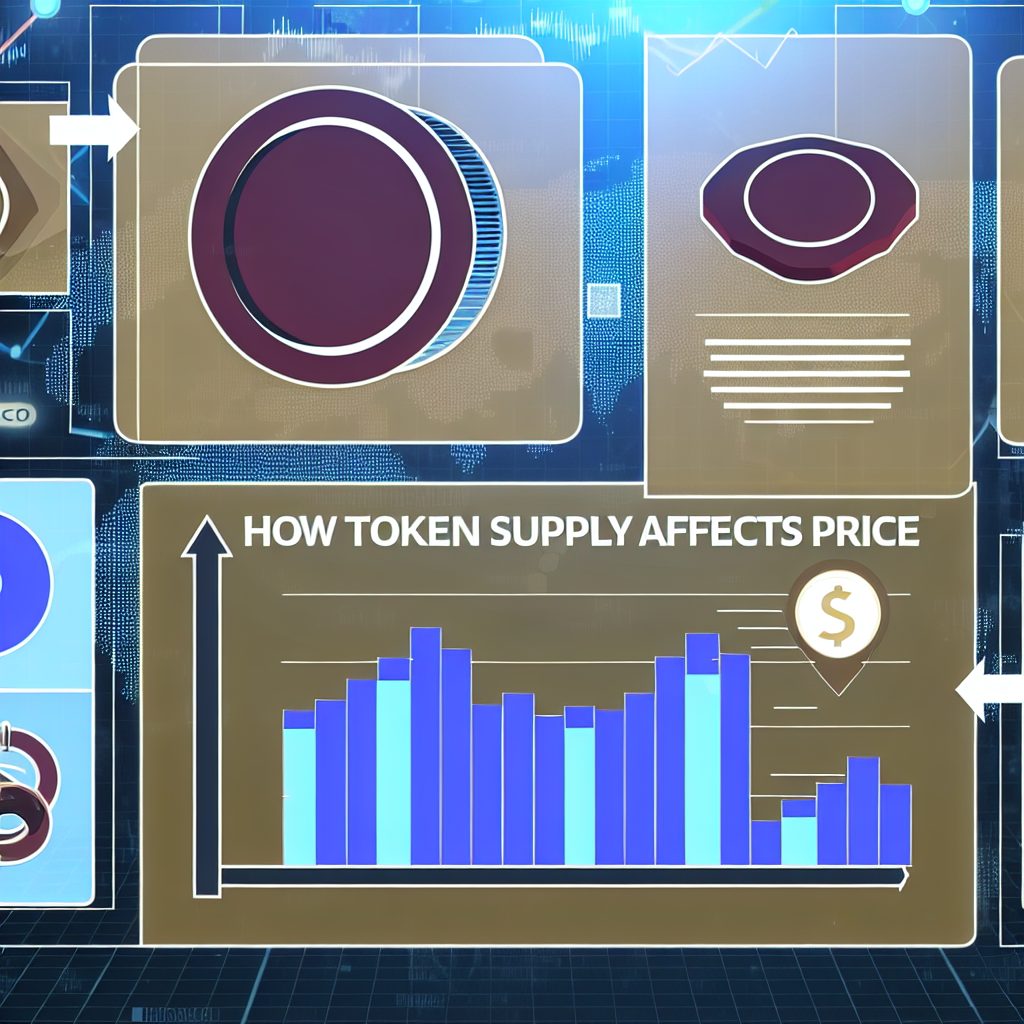How Token Supply Affects Price in the Cryptocurrency Industry
The cryptocurrency market is a complex ecosystem influenced by various factors, one of the most critical being token supply. Understanding how token supply impacts price is essential for investors, traders, and enthusiasts alike. This article delves into the intricacies of token supply, its types, and how it correlates with price movements in the cryptocurrency space.
Understanding Token Supply
Token supply refers to the total number of tokens that exist for a particular cryptocurrency. It plays a pivotal role in determining the value of a token. There are several key concepts related to token supply that every crypto investor should understand:
- Total Supply: The total number of tokens that will ever exist, including those that are currently in circulation and those that are locked or reserved.
- Circulating Supply: The number of tokens that are currently available for trading in the market.
- Max Supply: The maximum number of tokens that can ever be created, often defined by the cryptocurrency’s protocol.
- Inflationary vs. Deflationary Supply: Inflationary tokens have a supply that increases over time, while deflationary tokens have a decreasing supply.
The Relationship Between Token Supply and Price
The relationship between token supply and price is often described by the basic economic principle of supply and demand. When the supply of a token is limited and demand increases, the price tends to rise. Conversely, if the supply is high and demand decreases, the price may fall. Here are some key factors to consider:
1. Scarcity and Value
Scarcity is a fundamental economic principle that applies to cryptocurrencies. A limited supply can create a sense of urgency among investors, driving up demand and, consequently, the price. For example, Bitcoin has a maximum supply of 21 million coins, which contributes to its perception as a digital gold. As more people adopt Bitcoin, its scarcity can lead to significant price increases.
2. Market Sentiment
Market sentiment plays a crucial role in how token supply affects price. Positive news, such as partnerships or technological advancements, can lead to increased demand, pushing prices higher. Conversely, negative news can lead to panic selling, especially if the circulating supply is high. For instance, during the 2021 bull run, many altcoins with limited supplies saw their prices skyrocket due to positive market sentiment.
3. Tokenomics
Tokenomics refers to the economic model behind a cryptocurrency, including its supply mechanics. A well-designed tokenomics model can enhance a token’s value. For example, Ethereum’s transition to a proof-of-stake model with EIP-1559 introduced a deflationary mechanism by burning a portion of transaction fees, effectively reducing the circulating supply over time. This change has positively impacted Ethereum’s price as it becomes scarcer.

Case Studies: Token Supply in Action
To illustrate how token supply affects price, let’s examine a few notable cryptocurrencies:
1. Bitcoin (BTC)
Bitcoin’s capped supply of 21 million coins has made it a prime example of how scarcity can drive value. As more institutional investors enter the market and retail adoption increases, the demand for Bitcoin continues to rise. This has led to significant price appreciation over the years, particularly during bull markets.
2. Ethereum (ETH)
Ethereum’s transition to a proof-of-stake model has introduced a deflationary aspect to its tokenomics. The implementation of EIP-1559 has resulted in the burning of ETH with each transaction, effectively reducing the circulating supply. This change has contributed to Ethereum’s price growth, especially as DeFi and NFT markets expand.
3. Dogecoin (DOGE)
Dogecoin started as a meme but gained popularity due to its community and celebrity endorsements. Despite having an inflationary supply model, where new coins are continuously minted, Dogecoin’s price surged in 2021 due to increased demand and social media hype. This case highlights that while supply is crucial, external factors like community engagement and market sentiment can also drive prices.
Factors Influencing Token Supply
Several factors can influence token supply and, consequently, the price of cryptocurrencies:
- Mining Rewards: In proof-of-work cryptocurrencies, miners receive rewards for validating transactions. This process increases the circulating supply over time.
- Staking Rewards: In proof-of-stake networks, users can earn rewards by staking their tokens, which can also affect the circulating supply.
- Token Burns: Some projects implement token burns to reduce supply intentionally, which can create upward pressure on prices.
- Market Demand: The overall demand for a cryptocurrency can significantly impact its price, regardless of its supply dynamics.
Understanding Market Dynamics
To fully grasp how token supply affects price, it’s essential to understand market dynamics. The cryptocurrency market is highly volatile, and prices can fluctuate dramatically based on various factors:
1. Speculation
Many investors buy cryptocurrencies based on speculation rather than intrinsic value. This speculative behavior can lead to rapid price increases or decreases, often disconnected from the actual supply and demand fundamentals.
2. Regulatory Changes
Regulatory developments can significantly impact token supply and price. For instance, if a government imposes restrictions on a cryptocurrency, it may lead to decreased demand and a subsequent drop in price. Conversely, favorable regulations can boost investor confidence and drive prices higher.
3. Technological Developments
Technological advancements can also influence token supply and price. Upgrades to a blockchain network can enhance its scalability and usability, attracting more users and increasing demand. For example, Ethereum’s transition to Ethereum 2.0 aims to improve scalability and security, potentially impacting its price positively.
Token Supply Strategies for Investors
Understanding token supply can help investors make informed decisions. Here are some strategies to consider:
- Research Tokenomics: Before investing, research the tokenomics of a cryptocurrency. Understand its supply dynamics, inflationary or deflationary mechanisms, and how they may impact price.
- Diversify Your Portfolio: Consider diversifying your investments across different cryptocurrencies with varying supply models to mitigate risk.
- Stay Informed: Keep up with market news and developments that may affect token supply and demand. Follow trusted sources like Bitrabo for the latest updates.
- Long-Term vs. Short-Term: Determine your investment strategy. Long-term investors may focus more on the fundamentals of token supply, while short-term traders may react to market sentiment.
FAQs
What is the difference between total supply and circulating supply?
Total supply refers to the total number of tokens that exist, while circulating supply is the number of tokens currently available for trading in the market.
How does token burning affect price?
Token burning reduces the circulating supply, which can create scarcity and potentially drive up the price if demand remains constant or increases.
Can high token supply lead to lower prices?
Yes, a high token supply can lead to lower prices if demand does not keep pace with the available supply, resulting in oversupply in the market.
What role does market sentiment play in token price?
Market sentiment can significantly influence token prices. Positive news can drive demand and prices up, while negative news can lead to panic selling and price drops.
Conclusion
Understanding how token supply affects price is crucial for anyone involved in the cryptocurrency market. The interplay between supply and demand, market sentiment, and external factors can create significant price movements. By grasping these concepts, investors can make more informed decisions and navigate the volatile landscape of cryptocurrencies effectively.
For the latest news and price tracking in the crypto space, consider visiting Bitrabo. Stay connected with me on social media for more insights: X, Instagram, and Threads.
Disclaimer: This article is for informational purposes only and should not be considered financial advice. Always conduct your own research before making investment decisions.
The Crypto Watchlist of the Week 🔎
Subscribe to receive expert-curated projects with real potential—plus trends, risks, and insights that matter. Get handpicked crypto projects, deep analysis & market updates delivered to you.


